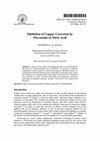Recycling of Different Available Organic Wastes through Vermicomposting
引用次数: 12
Abstract
Generation of organic wastes has been increased in an unprecedented rate in India with rapid population expansion, leading to disposal problems. These organic wastes can be converted into valuable wealth by applying vermicomposting technology. Vermicompost which provides macro and micro nutrients to the plants, also reduces pollution by providing a valuable substitute for chemical fertilizers. Present paper deals with vermicomposting of organic wastes from seven different sources and evaluation of nutrient in those vermicomposts following chemical analyses. These seven sources include coconut coir, water hyacinth, mixed materials, cabbage, banana pseudostem, cow dung, and rice husk. Three composting species of earthworms e.g. Eisenia. fetida, Eudrilus. eugeniae, and Perionyx excavatus were chosen for the experiment. Chemical analysis of vermicomposts under study clearly showed that the vermicompost from water hyacinth contained maximum amount of organic C, total N, and total K though the phosphorous content was maximum in vermicompost from mixed materials. Lowest nutrient content was observed in vermicompost of coconut coir. Vermicomposts from mixed materials, cabbage, banana pseudostem were at per in their chemical properties. It can be concluded that among the seven sources, vermicompost from water hyacinth is best for its nutrient value.利用蚯蚓堆肥回收不同的有机废物
随着印度人口的迅速增长,有机废物的产生以前所未有的速度增加,导致了处理问题。这些有机废物可以通过蚯蚓堆肥技术转化为宝贵的财富。蚯蚓堆肥为植物提供宏观和微观营养,也通过提供有价值的化肥替代品来减少污染。本文研究了7种不同来源的有机废弃物的蚯蚓堆肥及其化学分析后的营养成分评价。这七种来源包括椰壳、水葫芦、混合材料、卷心菜、香蕉假茎、牛粪和稻壳。三种堆肥蚯蚓,如爱森蚓。fetida Eudrilus。实验选用金银花和长爪草。对所研究的蚯蚓堆肥的化学分析表明,水葫芦蚯蚓堆肥中有机碳、全氮和全钾含量最高,而混合料蚯蚓堆肥中磷含量最高。椰壳蚯蚓堆肥中营养物质含量最低。混料蚯蚓堆肥与白菜、香蕉假茎的化学性质基本一致。综上所述,7种来源中,水葫芦蚯蚓堆肥的营养价值最高。
本文章由计算机程序翻译,如有差异,请以英文原文为准。
求助全文
约1分钟内获得全文
求助全文

 求助内容:
求助内容: 应助结果提醒方式:
应助结果提醒方式:


